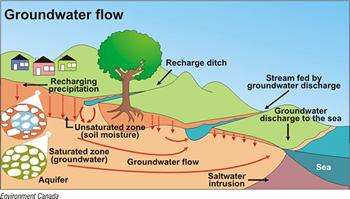Contaminated Off-Site Groundwater

Public Health Assessment
In 1942, the federal government established the Oak Ridge Reservation (ORR) in Anderson and Roane Counties in eastern Tennessee as part of the Manhattan Project to research, develop, and produce special radioactive materials for nuclear weapons. Four facilities were built at that time: the X-10 site, the Y-12 plant, the K-25 site, and the S-50 site. Over the years, ORR operations have generated a variety of radioactive and non-radioactive waste. Some of these pollutants were released into the environment and entered the groundwater. The Agency for Toxic Substances and Disease Registry (ATSDR) conducted a public health assessment (July 2006) to evaluate potential community exposures to contaminated groundwater coming from the ORR.
ATSDR concluded that no human exposures to contaminated groundwater outside the ORR boundary have occurred in the past, are currently occurring, or are likely to occur in the future. Therefore, ATSDR does not expect any health effects from contaminated off-site groundwater.
ATSDR found that the sources of groundwater contamination on the ORR are primarily in the shallow subsurface, and that nearly all of the shallow groundwater beneath the ORR ends up as surface water before leaving the site. Therefore, community exposure to contamination from groundwater beyond the ORR boundary is unlikely. Only one groundwater area outside the ORR boundary has been confirmed to be contaminated (the contaminants come from the Y-12 plant). There are no private wells pumping groundwater in this area, though, so no one is drinking contaminated groundwater.
In addition, since the concentrations of groundwater contaminants in the seeps or springs were below levels of health concern and the land overlying the contaminant plume is zoned as industrial, human contact is unlikely. ATSDR also examined the possibility of vapors from the groundwater contaminants entering an off-site office building that partially overlies the contaminated groundwater area. Conservative modeling estimated indoor vapor concentrations of the contaminants to be well below levels of health concern. The assessment also responded to community health concerns about off-site groundwater.
Contact Us:
- Agency for Toxic Substances and Disease Registry
4770 Buford Hwy NE
Atlanta, GA 30341-3717 USA - 800-CDC-INFO
(800-232-4636)
TTY: (888) 232-6348
Email CDC-INFO - New Hours of Operation
8am-8pm ET/Monday-Friday
Closed Holidays


